Trees Challenge 2022 - GLOBE Observer
NASA GLOBE Trees Challenge 2022: Trees in a Changing Climate
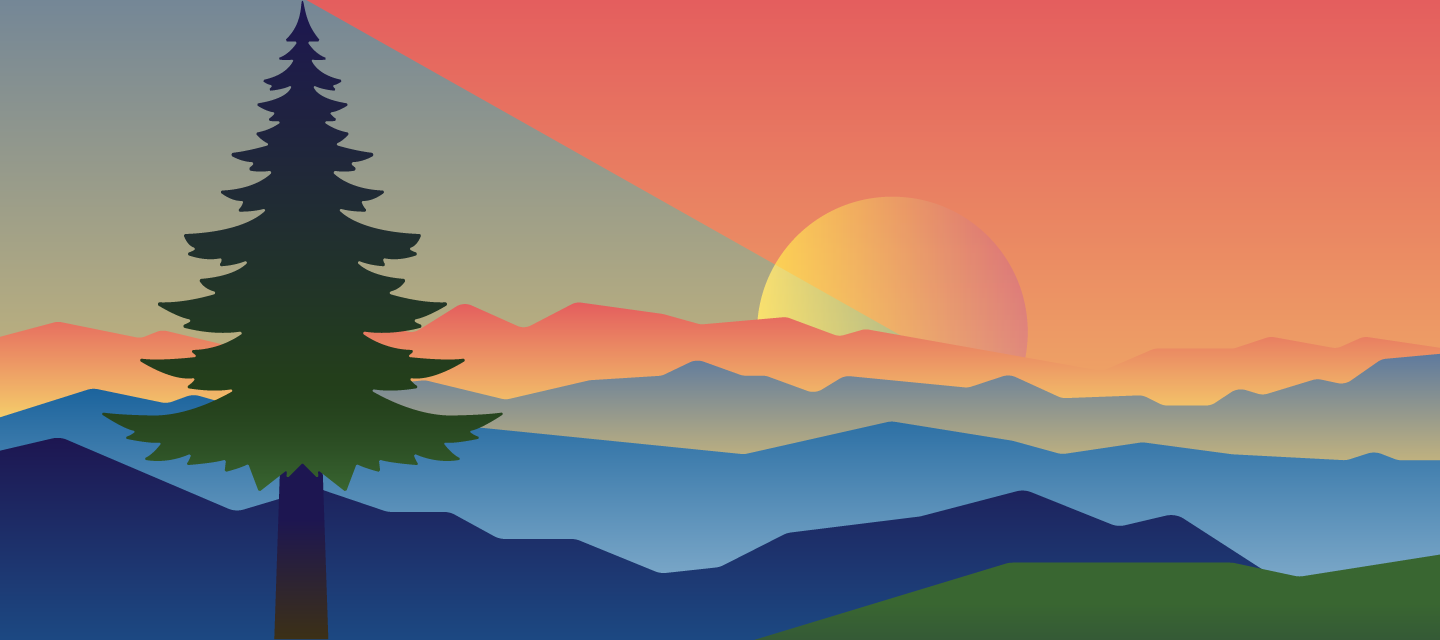
11 October to 11 November 2022
Short link to this page: https://observer.globe.gov/trees-2022
The NASA GLOBE Trees Challenge 2022: Trees in a Changing Climate has concluded. Download a customizable certificate of participation (PDF) to print or share on social media.
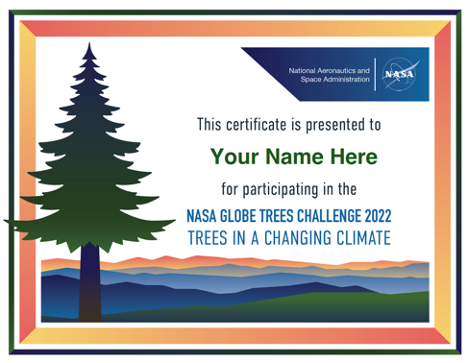
Trees and climate are intricately linked. Trees cool and moisten our air, fill it with oxygen, store carbon, create shade and habitats for other creatures, anchor the soil and slow the movement of water, and provide food, fuel, and building materials for human activities. Forests are considered one of the world’s largest banks for the carbon emitted into the atmosphere through natural processes and human activities, since trees store carbon as they grow. Carbon calculations help scientists forecast climate change. Tracking how trees are changing over time – both in height and in the number of trees that make up an area – is also a good indicator of an ecosystem’s health in a changing climate. Both tree height and trunk circumference can also help to measure biomass, the total mass of living material above ground in a particular area. The Global Learning and Observations to Benefit the Environment Program invites you to take part in our upcoming Trees Challenge: “Trees in a Changing Climate,” and contribute data toward a better understanding of trees and forests.
The Trees Challenge follows the Land Cover Challenge held in July/August 2022, which focused on observations of land cover change and comparisons to the 50-year record of Landsat satellite imagery. The continued observations of our environment by measuring tree height and tree circumference using the Trees tool in the GLOBE Observer app will help provide even more data to be used by NASA scientists and student researchers. After all, trees are land cover! The data collected by volunteer scientists on the ground can be compared to the space-based tree height data from the Ice, Cloud, and land Elevation Satellite-2 (ICESat-2) and the Global Ecosystems Dynamics Investigation (GEDI) instrument on the International Space Station. All of the observations from various sources allow scientists to create global maps of land cover and forests and can help us understand how our planet is responding to a changing climate. With the 3.03 trillion trees and 78,000 tree species on Earth, we are constantly striving to build and sustain the global inventory of tree height observations and to collect as many tree circumference measurements as possible. Scientists especially need data from multiple trees in areas that contain many trees. This data density is a way for scientists to build a more robust dataset of the tree heights from the ground and space.
Help us estimate the number of trees that make up your area and contribute to tree and climate science by sharing your observations of trees.

Images of trees sent in by volunteer scientists using the GLOBE Observer app. Left to right, trees in: Trang, Thailand; Karlovac, Croatia; Willare, Australia; Otterfing, Germany; Seara, Brazil; Whittier, California, USA; Bath, United Kingdom; and Anchorage, Alaska, USA
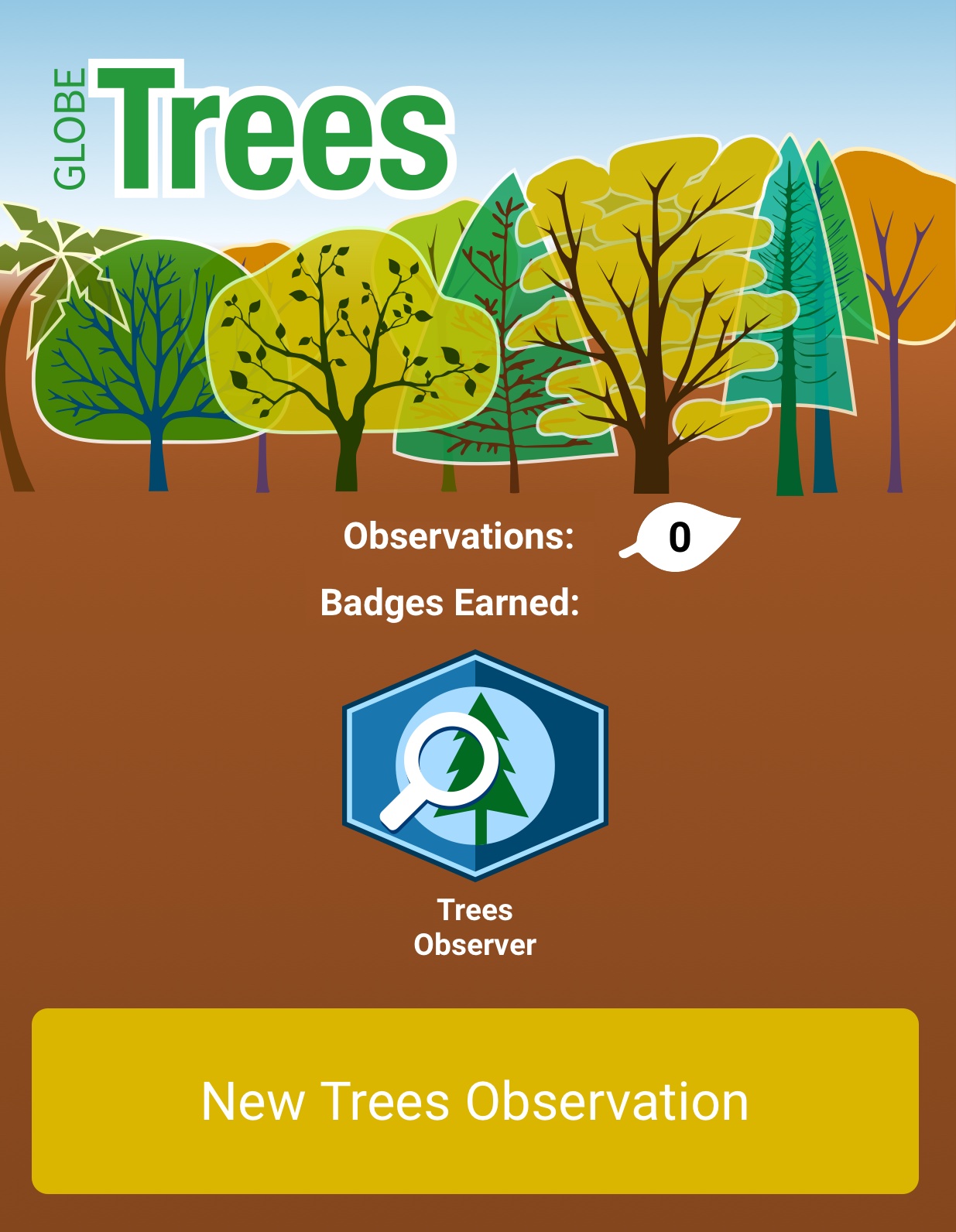
How to participate:
- Download the GLOBE Observer app and register an account.
- Estimate heights of trees around you using the Trees tool.* (Remember to always be safe and follow local guidelines when observing.)
- Optionally, use a tape measure to add data about tree circumference to your observations.
- Comment in the field notes about any changes you know have occurred in the area you took the tree heights, and if the trees appear healthy, unhealthy, or dead.
* A single tree height observation with the GLOBE Observer app takes 2-3 minutes. To take an observation, you will record the angle from the bottom to the top of the tree, walk to the tree and count your steps (to determine the distance) and report on surface conditions. The app will use that information to calculate an estimate of the tree’s height. An optional, but important step, is measuring the circumference of the tree. Even a basic observation without optional elements is valuable!
We invite you to follow The GLOBE Program on social media (Facebook ![]() , Instagram
, Instagram ![]() and Twitter
and Twitter ![]() ,) where we will release weekly video presentations from tree and climate scientists throughout the challenge period.
,) where we will release weekly video presentations from tree and climate scientists throughout the challenge period.
You can also participate by exploring trees through the activities and resources listed below.
Events and Videos:
Live webinars:
- Tuesday, 04 October, 2022: SciStarter Live! - Trees Please! Help the Girl Scouts and NASA Map and Measure Trees Near You to Protect the Planet
 . Explore citizen science with SciStarter and a NASA science specialist from the GLOBE Observer project. Plus, discover how your participation in this project can support THREE Girl Scouts programs on SciStarter: the Girl Scout Tree Promise, the Girl Scout Climate Challenge, and the Think Like a Citizen Scientist Journey.
. Explore citizen science with SciStarter and a NASA science specialist from the GLOBE Observer project. Plus, discover how your participation in this project can support THREE Girl Scouts programs on SciStarter: the Girl Scout Tree Promise, the Girl Scout Climate Challenge, and the Think Like a Citizen Scientist Journey. - Tuesday, 11 October, 2022: NASA GLOBE Trees Challenge 2022: Trees in a Changing Climate Kickoff Webinar with the Los Angeles Public Library (LAPL)
 . Learn how to participate in the challenge in this family-friendly virtual presentation.
. Learn how to participate in the challenge in this family-friendly virtual presentation.
Two podcasts will be released the week of 03 October, SciStarter Podcast with Brian Campbell, NASA GLOBE Observer Trees Science Lead ![]() and Solve It! For Kids Podcast with NASA Senior Earth Science Specialist
and Solve It! For Kids Podcast with NASA Senior Earth Science Specialist ![]() The podcasts included discussions all about trees and the environment, why NASA and GLOBE study trees from the ground and space, ICESat-2, and the upcoming NASA GLOBE Trees Challenge 2022: Trees in a Changing Climate. In addition, Solve It! For Kids published an accompanying blog post, Be a Citizen Scientist and help NASA GLOBE Measure Trees
The podcasts included discussions all about trees and the environment, why NASA and GLOBE study trees from the ground and space, ICESat-2, and the upcoming NASA GLOBE Trees Challenge 2022: Trees in a Changing Climate. In addition, Solve It! For Kids published an accompanying blog post, Be a Citizen Scientist and help NASA GLOBE Measure Trees ![]() .
.
In addition, we will be releasing weekly social media videos featuring scientists on topics related to studying trees.
- Amy Neuenschwander, researcher at the University of Texas Austin, about looking at vegetation from the ground and from space

- Nathan Kurtz, researcher at NASA's Goddard Space Flight Center, about how NASA studies tree height with ICESat-2

- Lola Fatoyinbo, researcher at NASA's Goddard Space Flight Center, about ghost forests

- Deanne Danke, teacher at Monsignor McClancy Memorial High School in East Elmhurst, NY about doing tree height data collection with her students

- Nancy Glenn, researcher at Boise State University, about studying vegetation and climate change

- Brian Campbell, GLOBE Observer Trees science lead at NASA's Wallops Flight Facility with a summary of the challenge

Selected Activities and Resources Related to Trees:
Visit the full Trees Resource Library for more.
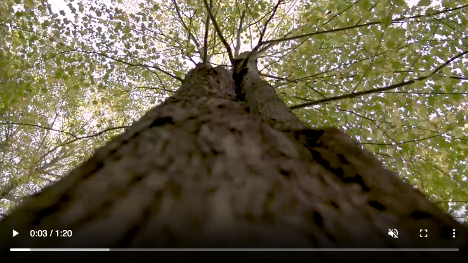
[1:20] Trees are diverse and tree height can tell us a lot about Earth’s ecosystems. Satellites and ground-based measurements are used to track tree growth, monitor how well an ecosystem supports trees, and estimate how much carbon is stored by trees. GLOBE’s citizen scientist community encourages citizen scientists to use the GLOBE Observer app to take tree height measurements with their smart phones. These observations are added to a freely available, global inventory of tree height.

How To Take A Trees Observation
[8:21] GLOBE Observer Trees science lead Brian Campbell (NASA Wallops Flight Facility) demonstrates how to use the GO app to take a tree height measurement.
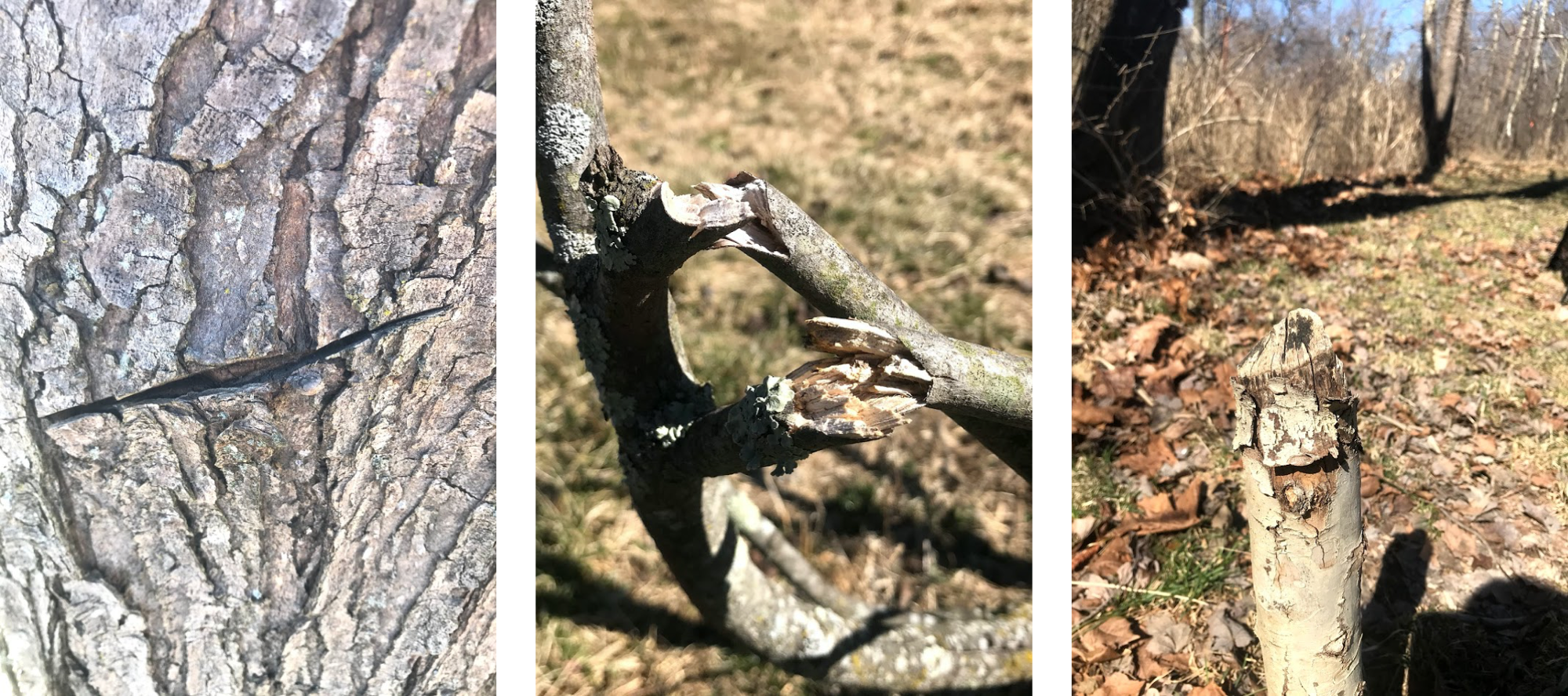
Just like people can be healthy or sick, so can trees! Experts who study trees (called arborists) look for symptoms in trees to determine whether they are healthy or not. This activity guides you through looking for some of these indicators in a tree near you. The one-pager version of the activity is self-contained, with all the instructions included as part of the worksheet. The guide version has the instructions separated from the worksheet and includes a few more examples, which may be more useful for a facilitator leading a group activity, or when the extra text on the workshop would be a distraction, as for younger children.
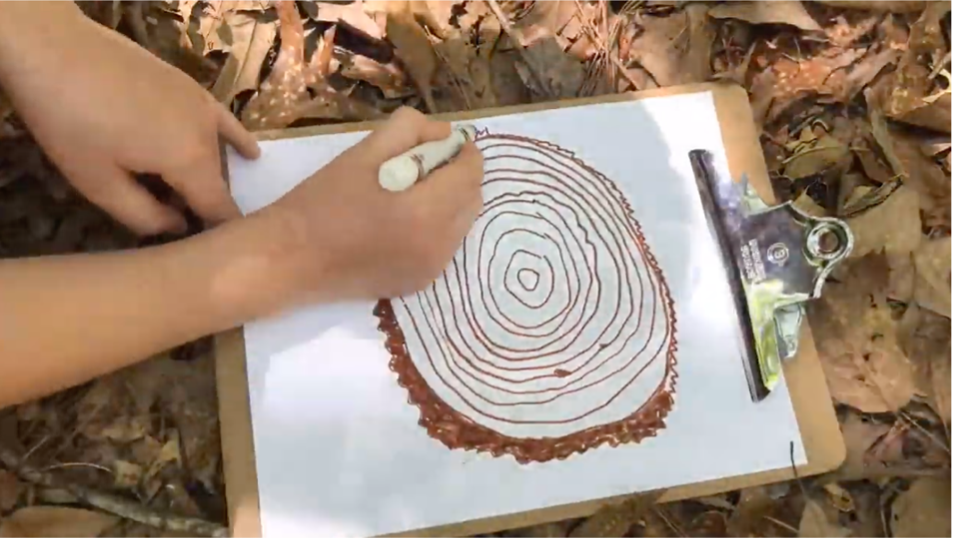
Stories Trees Tell: Learning the Language of Our Tall Forest Friends
This activity will help you understand how dendrochronology, or the study of data from tree ring growth, can help us to understand more about a tree’s age along with trauma and environmental events it has encountered over the course of its lifetime.
NASA eClips: Dr. Lola Fatoyinbo Agueh
[1:51] Dr. Lola Fatoyinbo Agueh, a Research Physical Scientist at NASA's Goddard Space Flight Center, shares her journey from her childhood to current career in a video from NASA eClips.
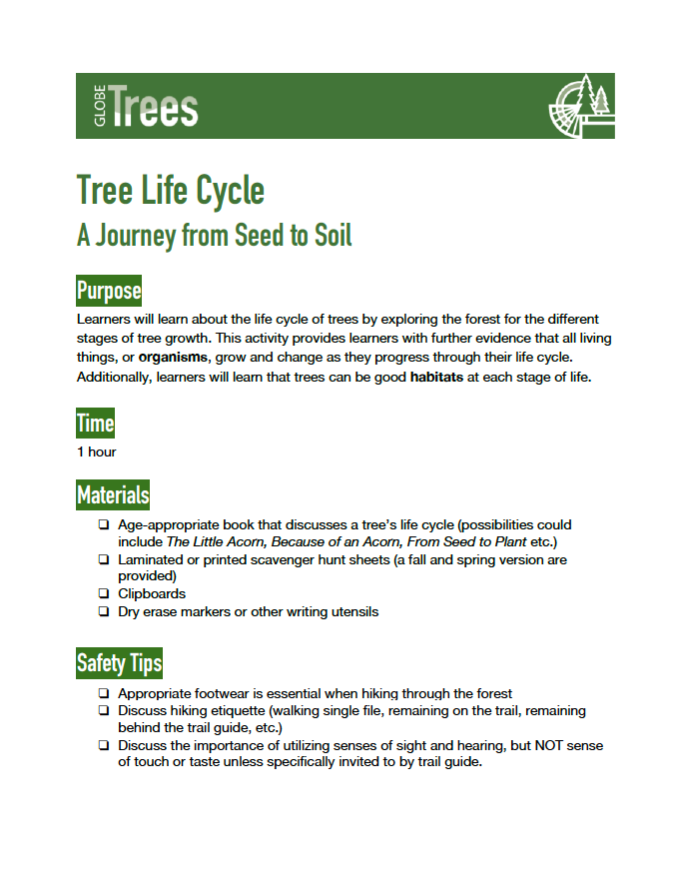
Tree Life Cycle: A Journey from Seed to Soil
Learn about the life cycle of trees by exploring the forest for the different stages of tree growth. This activity provides learners with further evidence that all living things grow and change as they progress through their life cycle, and that trees can be good habitats at each stage of life.









